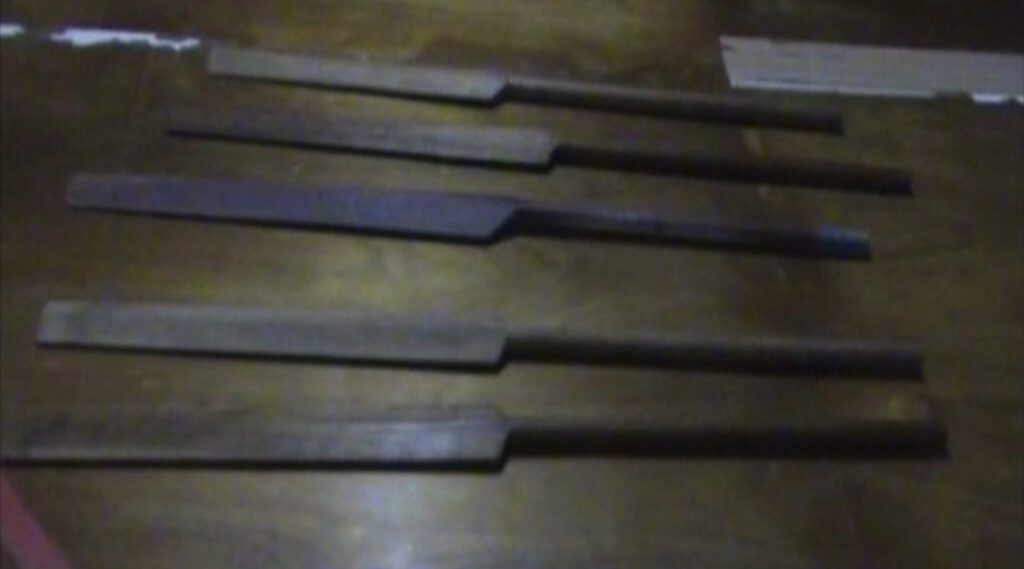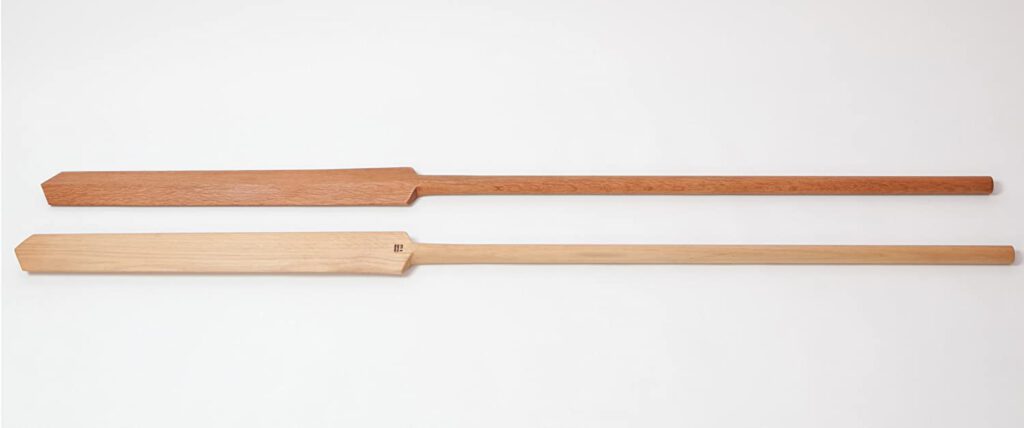Earlier today I wrote a piece about a current design of an ueku (oar), which you can read here. I would like to add a short note about the various designs of the ueku and what the design means for the techniques used with it.
This is the first time that I share these specifics about the ueku. At the former Matsubayashi-ryu Nagamine dojo “Kodokan” were stored a large number of ueku in the corner at the right front side. These were of the most intruiging designs – quite sturdy, some covered with old paint, these ueku had extremely long blades and proportionally short handles and were just much bigger than any other I have seen. The blades were actually at least half of the total length of the ueku.
While this sounds weird, in practice, it is possible to swing them even with one hand, which is due to the specific balance generated by the blade lenghts. They almost operate like a sword such as that you can cut and all without the rear end hindering your free movement of the implement. This kind of technique is almost impossible to achieve with other ueku designs.
However, this old design seems to have been completely neglected and almost forgotten. Below you see a collection of five of such ueku, with handles of somewhere between 30 and 40 mm in diameter and big blades half the total length of the ueku. It would appear that this would make the handling difficult when compared to smaller and lighter ueku, but the point I am about to make is a quite contrary.
You can actually swing these ueku with just one hand and cut with it like with a sword. This is possible almost only with this kind of ueku with an extremely long and big blade relatively to the handle. Since these ueku are quite old, and when comparing them to more new designs, it gets apparent that the over time the blades became shorter and shorter and the handles got longer and longer so that the blade today sometimes constitutes a mere 1/3 of the total length.
It may be that this design modification is the result of a simple misunderstanding of the technique of the ueku probably due to some bad ueku design. As a consequence, not only the design changed over time, but also the original techniques of the ueku were replaced by something different. In the following photos you can retrace what I mean by change in blade length over time.
Bottom: Old ueku, blade length almost 1/2 of total length. Photo by the author.
Then, assuming this is one possible and valid explanation, the Okinawan saying that “The ueku was the sword of the fisherman” might have to be taken literally. Because those old ueku could actually be operated very similar to a sword; In the video below I swing the ueku with just one hand a number of times, look for it. This is possible almost only with this kind of long-bladed ueku because you can handle it with the hands close to one another and drive it, similar to how it is done with the sword handle. Of course it is not exactly the same, but you get the idea.
It should be noted that the big and long blade is exactly the trick which makes the ueku well balanced and in turn allows for this kind of technique. It may be time to reinvent it.
© 2021, Andreas Quast. All rights reserved.



